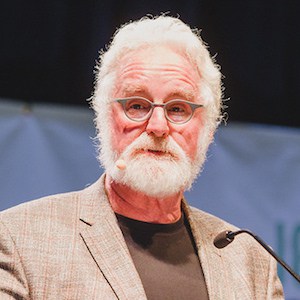Social Business Roundup: SOCAP Aims for the Mainstream, Cambodia Caps Microcredit, Quali Health Simplifies Health Care
Eyeing ‘Mainstream,’ SOCAP Moves to New Owners
In SOCAP’s announcement that it was under new ownership this week, the word “mainstream” is mentioned six times. Indeed, reaching a wider audience is the goal for organizers behind one of the biggest conferences focused on impact investing and socially inclined business models. SOCAP will spin out of MissionHUB LLC after a group of investors led by Kantian Social Ventures took a majority stake. But much of SOCAP’s key management are staying on, including co-founders Rosa Lee Harden and Kevin Jones. This October, SOCAP will celebrate its 10th conference in San Francisco, but we’ll get a sense of its new direction at the launch of The Good Capital Project, the first initiative of the new partnership, on June 19 in New York City.
Bad Week for Microfinance in Cambodia
On Monday, in an unprecedented move, the National Bank of Cambodia capped interest on microfinance loans to a maximum of 18 percent per year – about half of what some MFIs currently charge. The decision came from the prime minister, and with elections in June, some analysts saw political overtones. Others predicted it could bankrupt MFIs and force the poor to pay even higher rates to loan sharks – though some clients welcomed the move. Earlier, a new study was published in the Journal of Development Studies, suggesting that Cambodian households would be better off avoiding microcredit altogether, because it leads to decreases in household expenditure.
When Health Care Isn’t So Complicated
Who knew that health care could be so complicated? Everybody, it seems, except the U.S. president. And if it’s complicated in resource-rich America, consider South Africa, which ranks 175th out of 191 countries in WHO’s ranking of public health systems.
Enter Nthabiseng Legoete, a 37-year-old South African doctor who started Quali Health after visiting India and falling in love with a simple business model she saw there. (Incidentally, here’s a model we fell in love with a couple of years ago.) “I saw a production line approach to a lot of services, where one person is dedicated to one function and becomes better and faster at that one thing.” She opened a similarly focused clinic in Diepsloot, a shantytown, and turned a profit. Now, as part of her refreshingly simple business model, she’s expanding.
Navigating the Big Challenges of Big Data
Accion released a new guide this week on “Unlocking the Promise of (Big) Data to Promote Financial Inclusion,” which aims to provide financial services providers with “actionable insights and first steps” on how to better use big data to boost financial inclusion. The report, developed with the support of the Citi Foundation, points out a remaining gap between the vision and reality of leveraging this data. Its approach to bridging this gap was summed up memorably in a quote from Ben Knelman of Juntos Finanzas: “Real innovation sits where it looks the least glamorous and is the most painful.”
What’s the Cost of ESG Screening?
Do investors pay a premium to invest sustainably? A number of studies suggest that there’s no significant performance difference between sustainable and nonsustainable mutual funds. But in a recent analysis, investment research and management firm Morningstar asks a less-studied question: Are sustainable mutual funds more expensive to manage than their non-sustainable counterparts? According to Morningstar, the answer is: Only a little. “Funds with an ESG mandate tend to be a bit more expensive than other funds, but the differences are not large,” the company reports. What’s more, prices may go down as these funds grow and benefit from economies of scale.
Can Profit Help Save our Oceans?
The Economist Films recently rolled out a vivid update on the creative, and now profitable, three-year project from carpet giant InterFace to find new uses for the waste fishing nets that litter the ocean floor and stunt fishing communities. Fishing nets make up an estimated 10 percent of all ocean waste and InterFace has been in partnerships retrieving them for years, paying locals to source the material and repurposing it into textiles. But as The New York Times reports this week that the Great Barrier Reef is dying at a mind-boggling rate, we need reminding of business models that can expand the circular economy – quickly.
Bonds Tighten Between Investing and Sustainable Development Goals
Last week, the World Bank issued bonds that, for the first time, directly link returns to the performance of companies advancing the SDGs. The bonds raised 163 million Euros, and the bank will use the proceeds to help finance projects aligned with the global goals. This week, Toniic Institute released the first version of its SDG Impact Theme Framework, which links 11 macro impact investing themes, and 55 subthemes, to the SDGs. According to Toniic, the framework aims “to allow impact investors to align their investments with the SDGs and thereby find greater alignment and synergy in global investment opportunities.”
A Role Model for the Tone Deaf
If your corporation is in search of fresh ideas in an emerging market, it might be worthwhile to note the tone of Johnson & Johnson’s African Innovation Challenge.
The contest was designed to identify health care solutions in Africa and was oriented toward and respectful of specifically African entrepreneurs. The application site discussed the continent’s “buzzing” culture, it’s “commercial vibrancy” and “growing innovation infrastructure.” It focused on Africa’s continuously emerging talent and creativity, rather than the dated stereotype of helplessness used so often to depict health care in Africa.
Three winners – all of whom will receive money and mentorship from J&J – were named this week.
Heron Hits its Target: Lessons Learned from Investing 100 Percent in Impact
Remember back in 2015, when the F.B. Heron Foundation announced it was moving 100 percent of its assets into impact investments by the end of fiscal year 2017? The foundation achieved that goal last December, and in a recent SSIR article, its president, Clara Miller, discusses seven lessons Heron learned in the process, which could be useful to other foundations and impact investors. She also explores three broader considerations that are relevant to philanthropy and impact investing – definitely worth a read.
Quotable
“… Social enterprises having an impact in rural areas in Colombia, are strengthening trust and helping rebuild the social fabric acutely affected by the armed conflict. These companies are demonstrating that there is a way to build a decent livelihood away from illegality.”
-Mariangela Ramirez, with Andean Cacao Ltd., in Colombia Today, on how social enterprises can help reduce poverty and maintain peace in the country.
Photo credit: SOCAP
Homepage photo: South Africa’s Diepsloot shantytown. Credit: Niko Knigge, via Flickr.
- Categories
- Environment, Health Care, Investing



